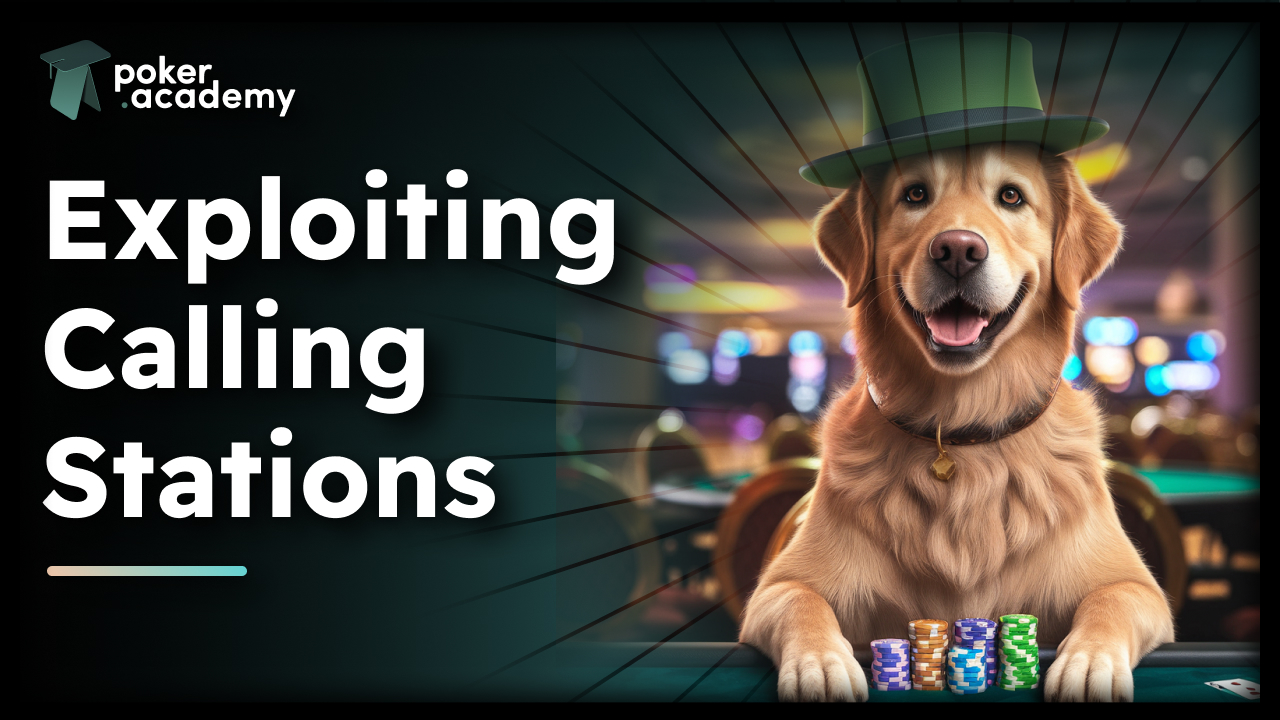Playing against Calling Stations can be a great opportunity, but you need to know how to take advantage of their weaknesses. In this guide, we’ll look at how passive players play, what they do wrong, and how you can use their mistakes to your advantage.
Definition of ‘calling station’
Calling stations often call too much both preflop and postflop. They really like to see the river and also hate folding even the weakest draws. This loose style makes them predictable and easy to exploit, giving you many chances to win. However, it’s important to understand their habits and use the best poker strategies to make the most of these opportunities.
Typical statistics for calling stations include a wide gap between VPIP (Voluntarily Put Money Into The Pot) and PFR (Pre-flop Raiser); for regular players, this is usually around 28/21, but for Calling Stations, the gap can be 15 or more, indicating a tendency to call wide preflop. Their WTSD (Went to Showdown) is often 36% or higher, showing that it is hard to kick them out of the pot. Their W$SD (Win $ At Showdown) is usually below 45, meaning they often reach showdown but with weak hands. Additionally, people do not bluff against them so the statistic is dropping even more.
Punish calling stations on the flop
Calling stations love to call and often play too many hands. They rarely 3-bet preflop, and when they do, it’s usually only with strong hands like big pairs (AA-TT) or high cards like AK, AQ, and AJ. If you know what a solid preflop strategy looks like for example for an 80bb stack in the Big Blind, you can adjust your game against these players after the flop. Look how many 3-bets calling stations miss preflop. You can find this chart and many others in Poker Academy’s Preflop Charts Tool. Try it for free and learn poker online every day.
When playing against Calling Stations, you should in general increase your C-bet quantity, especially when you’re in position having good cards connected well to the board. However, be cautious on middling boards with flush and straight draws because, as mentioned, these players often miss 3-betting with mid-strength suited hands. This means they might have a wider range of drawing hands that can connect with these types of boards. Thanks to their lack of aggression it’s up to you how big of a pot you want to build. You can check a lot of weak hands because, often, you will see a free card and potentially can fold against their occasional bets.
What to do on the turn?
Calling Stations will call your flop bets with a wider range than a typical player, making them more likely to continue with weaker hands. This allows you to keep betting more often than usual because most of their truly strong hands would have bet on the flop. By recognizing their tendency to call rather than bet, you can apply pressure on later streets and take advantage of their passive style.
River simplifications
Calling stations are very curious and will call big bets on the turn with almost anything—such as first, second, or even third pairs, and any type of draw. This means you should try to make thin value bets on the river, even with second pairs, because opponents who constantly call often have weak hands, like third pairs or even Ace-high, which they may seriously consider taking to showdown. Knowing they call so wide, you can extract more value from hands that wouldn’t usually be worth betting against other players. Their behavior also means you shouldn’t bluff them much.
The best poker strategy out of position
When playing against calling stations out of position, it’s best to fast-play your strong hands since they rarely bet when checked to. You can safely check with a capped or vulnerable range because calling stations often miss betting opportunities. However, if an opponent with these characteristics bets or raises, it’s usually a sign of strength, so don’t hesitate to fold frequently in those situations. If you want to improve your poker decision-making process, we encourage you to read another Poker Academy’s blog called ‘Introduction to Basic Poker Math’.
